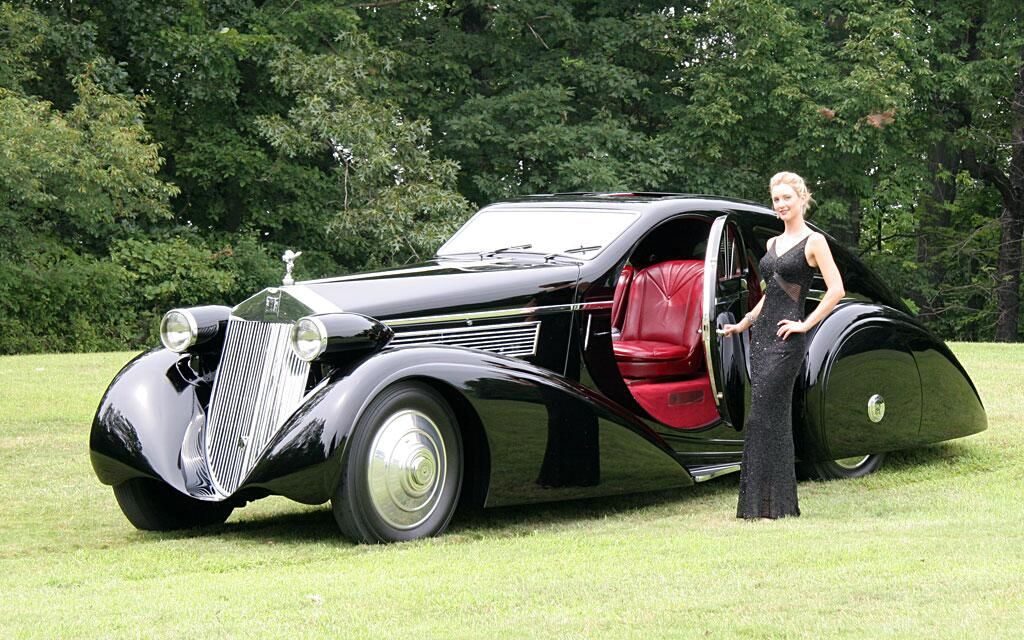The Rolls-Royce Phantom will soon celebrate its centenary, although it still looks breathtakingly beautiful, stylish, fashionable, and even futuristic.

Source: Pinterest
Brilliant German engineers invented cars, but it took two talented Britons to make the vehicles genuinely great. In 1906, business partners Charles Rolls and Henry Royce introduced their powerful offspring to the world called the Silver Ghost, which set a new standard in the history of the automotive industry for quality, comfort, and reliability. While the vehicles for the European market were assembled at the Derby plant, the US market (with its left-hand drive) was supplied from the Springfield-based factory. But the time for replacement came, and a new masterpiece was born.
Source: Atchuup
For fifteen years since the first launch, Rolls-Royce delivered a single model to the market, ignoring competitors who, during this time, multiplied, grew, adopted, and gave birth to their innovative ideas, rapidly conquering the North American market. When the British were no longer comfortable with how competitors like Hispano Suiza and Isotta Fraschini were breathing down their backs, it was urgently necessary to replace the Ghost. This replacement, or modernization, was released in May 1925. At first, it was known as the 40/50 “New Phantom”, but today this model is commonly referred to as the Phantom I. The 40/50 engine name prefix was inherited from the Silver Ghost, as chassis, front-engined, rear-wheel-drive layout, and three/four-speed gearboxes. The main difference between these two models was the power, size, and luxurious design: this was how the premium class turned into a luxury.
Source: Hitchcock Classic
The newly launched automobile was the epitome of luxury and style – majestic and very expensive. However, despite all the luxury, it was still a transitional model since the new 6-cylinder overhead valve engine with a displacement of 7.7 liters was not suitable for the outdated chassis inherited from its predecessor. The company’s management decided not to create a new chassis. So the result was a very Silver Ghost-like vehicle: the same body companies built bodies on the same chassis with the same wheelbase. All New vehicles, offered in two-wheelbases, were manufactured by the company in parallel with the “20HP” at the Derby plant, where aircraft engines were also assembled. The finished chassis was then shipped to the chosen bodybuilder to finish the job. The company was always very specific about bodybuilders, and the proposed designs, but still, sometimes customers managed to install some extravagant structures on the chassis. As it was with almost every luxury car, customers were able to order specific bodies. Interestingly, British customers mainly bought the usual model without frills, but the more extravagant Americans wanted luxury. Therefore, several more eccentric experimental models were built at the British factory. The procedure of ordering a new body was long and tough: the buyer began to negotiate with the potential coachbuilder several months before the chassis itself was ready. If agreed the manufacturer began the work. It took from 6 months to a year to complete the order. Although this luxurious vehicle was well received by the media and customers, already in 1929 the next-gen car was announced, which was the company’s first new car since the Silver Ghost. Production of the Springfield Phantom continued until 1931 when the American branch was completely closed.
Source: Pinterest
The history of 1925 Phantoms was not without a strange incident. The first 66 copies of the Phantom I series for the American market did not receive a new brake system with a booster acting on all wheels – while this system was present on copies of the English Rolls-Royce starting from the first car. Subsequently, the company had to recall these machines and retrofit them. On the other hand, the American Rolls-Royces each and everyone received the Bijur centralized lubrication system, which British-made cars did not have for another 4 years.
If you have this model or another classic car just contact us and sell it to us.